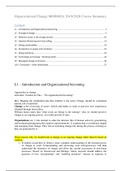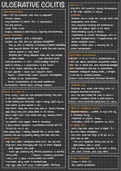Summary
Organisational Change (MAN-MOD002A) 23/24 - Summary of lectures, articles and exam questions - Grade 9,5
- Course
- Institution
This document covers all lectures for the course Organisational Change (organizational change) at Radboud University for the MSc. programme OD&D. Summaries of articles, summaries of presentations, examples from lectures, as well as sample exam questions are included - everything you need to know to...
[Show more]




